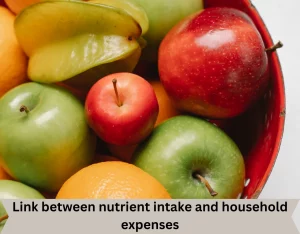ForumIAS announcing GS Foundation Program for UPSC CSE 2025-26 from 19 April. Click Here for more information.
ForumIAS Answer Writing Focus Group (AWFG) for Mains 2024 commencing from 24th June 2024. The Entrance Test for the program will be held on 28th April 2024 at 9 AM. To know more about the program visit: https://forumias.com/blog/awfg2024
Source-This post on Link between nutrient intake and household expenses has been created based on the article “The relationship between nutrient intake and household expenses” published in “The Indian Express” on 9 March 2024.
UPSC Syllabus-GS Paper-2- Issues Relating to Development and Management of Social Sector/Services relating to Health.
Context – The article highlights the need for complementing Nationwide studies on dietary patterns with the findings of Household Consumer Expenditure Survey to better address the issues of malnutrition in India. Link between nutrient intake and household expenses.
What are the findings of the recently released Household Consumer Expenditure Survey (HCES)?
It points to a shift in the food consumption pattern of Indian household. The household consumption basket consisted of three major categories — food items, consumables and durable goods.
Some of the important observations are as follows-
1) The average monthly per capita expenditure (MPCE) was Rs 3,773 for rural and Rs 6,459 for urban households. The percentage of expenditure on food items has decreased below 50 % for urban as well as rural areas.
Significance of this data– For the first time the share of expenditure on food for rural households has come down to less than 50 per cent. This means that they can spend more on other consumer goods, indicating a better standard of living.
2) The proportionate share of expenditure on cereals has also come down along with better dietary diversity including other food groups.
Read more- All India Household Consumption Expenditure Survey 2022-23
What is the limitation of MPCE data?
1) The MPCE data shows only the consumption pattern of the entire household and does not throw light on intra-household allocation of food. It does not talk about food and nutrient intake of different sections of the population. For ex-women, adolescent girls.
2) It does not talk about actual intake of salt and sugar, because there is no way of estimating the amount of salt and sugar consumed through processed foods and beverages. This assumes importance in the backdrop of increasing risk of obesity, diabetes and hypertension in India.
What should be the way forward?
1) Awareness-
A) Front-of-pack food labelling should make consumers aware of the composition of processed foods, with a traffic light system indicating high salt, fat or sugar content.
B) Nutrition literacy will educate consumers about healthy eating practices and lifestyle modification.
2) Imposition of health tax – Since the practice of eating out is increasing in India, NITI Ayog has recommended imposition of 20% to 30 % health tax in addition to GST on high fat, sugar and salt (HFSS) foods.
3) Expanding the basket of low-cost eateries run by the government– Along with affordable nutritious meals, there should also be availability of healthy alternatives such as buttermilk in these centres.
4) Provision of nutritious food in Anganwadi –There should be greater allocation of vegetables in government Anganwadi, and school noon meal schemes to promote healthy eating habits and improving nutrition.
5) Diversifying PDS basket – The PDS basket should be expanded to provide greater diversity of foods to ensure nutritional security.
Along with steps, there is an urgent need for diet surveys to estimate the actual nutrient intake.
Question for practice
Highlights the steps that can be taken to ensure nutritional security in India?





